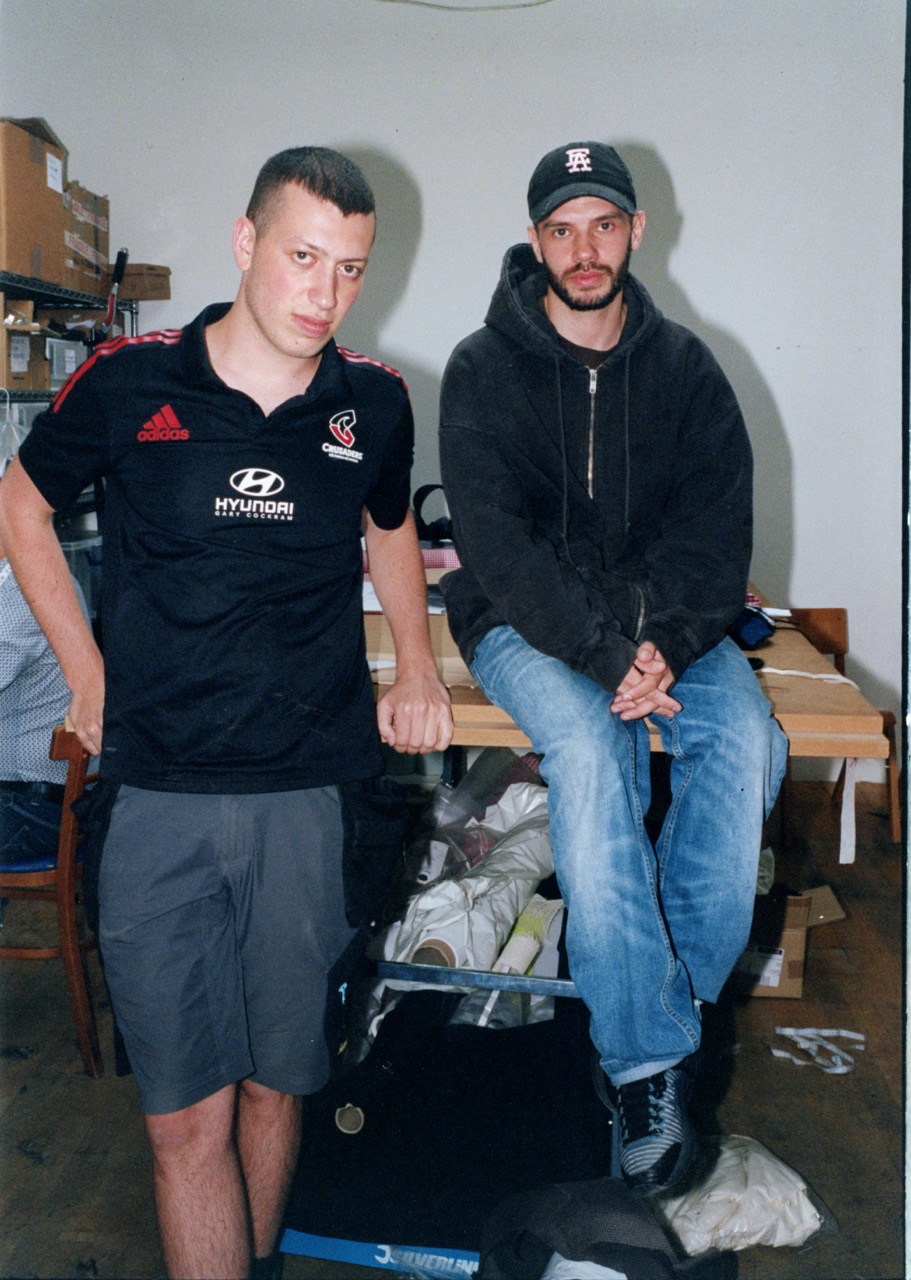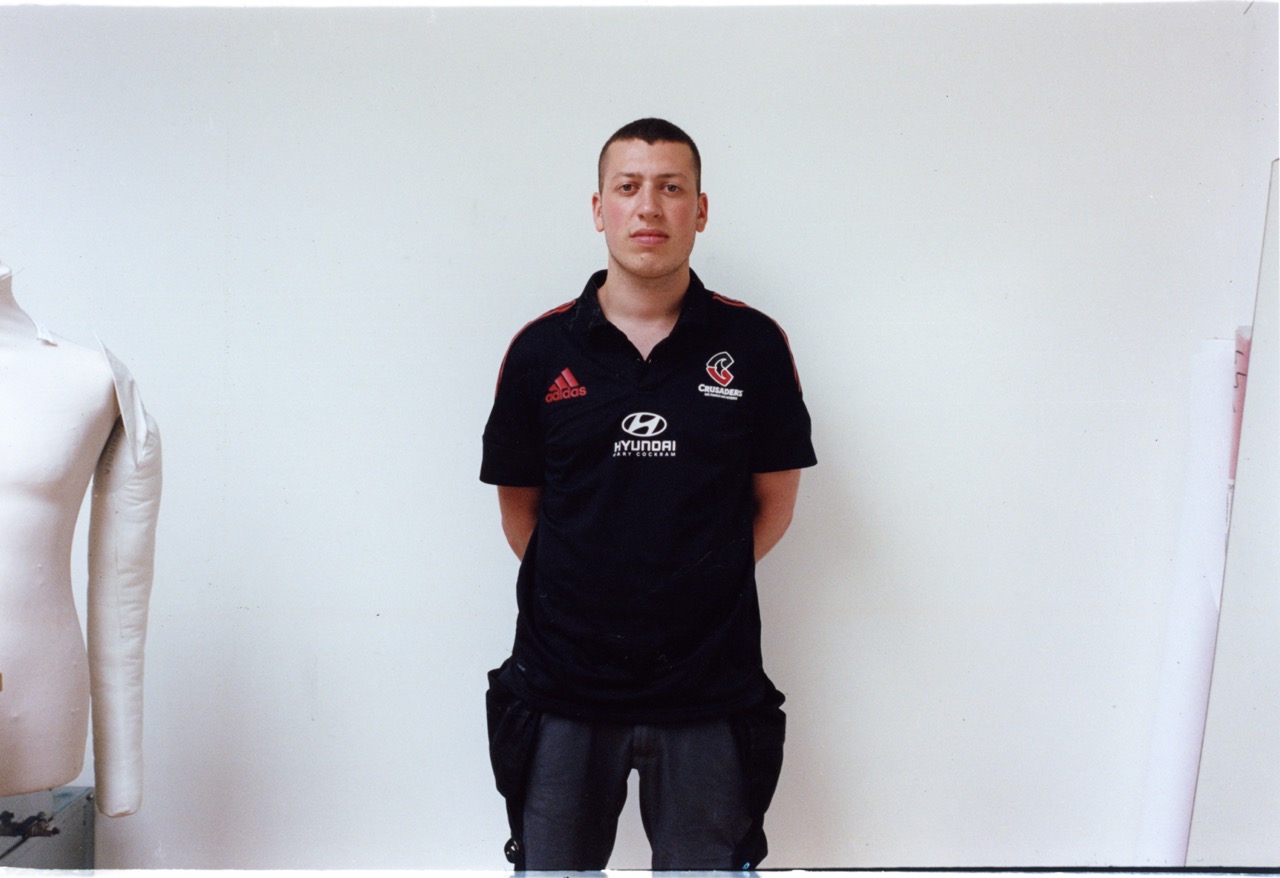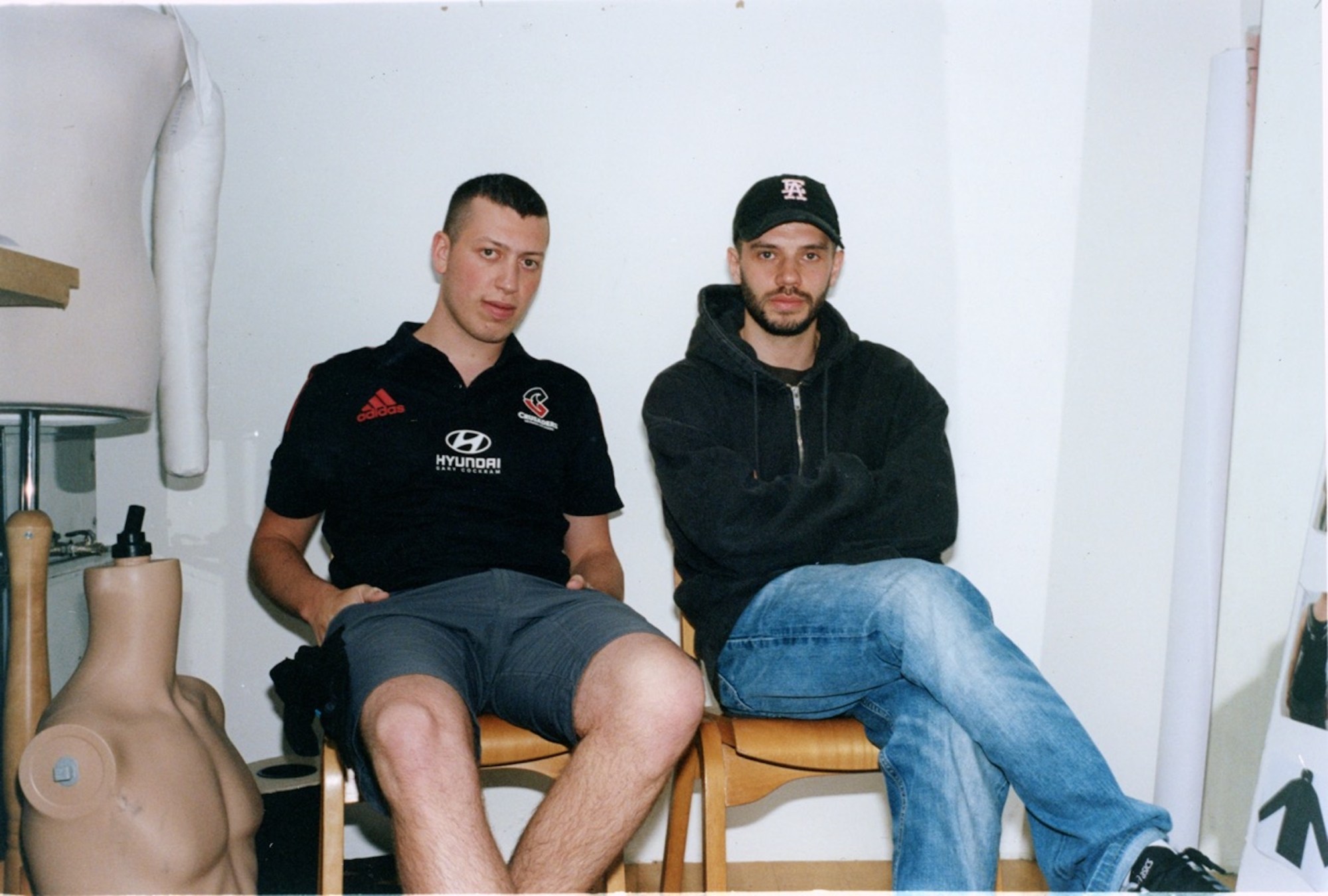Anyone worth their sartorial salt knows London is a menswear hotbed. From the indie labels that thrived in 80s Kensington Market to Savile Row via the capital’s art schools, the Big Smoke teems with fashion finery – and it’s not just for the fairer sex. Indeed, it’s a city where menswear design has been elevated to a fine art, often serving as a means to challenge conventions of masculine dress, even propose new definitions of ‘masculinity’ itself, and its associated status. Two designers doing this with aplomb are Olly Shinder and Aaron Esh. Much like their forebears – Craig Green, Martine Rose and Nasir Mazhar, for example – they’re sticking by their guns in the hope that great design cuts through, proposing impossibly chic shirting, athletic cuts and a softened masculinity.
Much like fine artists, they treat their roles with an existential significance, questioning whether each garment justifies its creation. In fact, this discipline is one of several parallels between the designers, who have both spent months pouring their hearts into their first runway shows since graduating.

Garnering major stockists from the get-go, the recent CSM alumni eschewed working in-house at major labels, set instead on their roles as independent designers. As such, fashion incubator programmes, like the NEWGEN and Fashion East, which will platform Aaron and Olly’s shows respectively, are welcome support for a costly outgoing.
So far, they have dug deep, cementing their codes along the way. For Aaron, he’s dressing a man he knows: one who likes a party, isn’t afraid of a bubble-hemmed skirt, and whose shirts come with darts and ruffles aplenty. For Olly, it’s an exercise in sensualising otherwise butch military or workwear shapes, riffing on clubland and fetish cues with contoured zips and plenty of skin.
Now in the throes of finalising their collections before showtime, they joined us in Olly’s studio to discuss the communities behind them, inspirations and London’s fashion scene.
SUBSCRIBE TO I-D NEWSFLASH. A WEEKLY NEWSLETTER DELIVERED TO YOUR INBOX ON FRIDAYS.
Olly, Dover Street Market Paris and Fashion East have supported you. Aaron, the Alexander McQueen scholarship helped fund your MA, the LVMH Prize 2023, and, recently, NEWGEN. How have these helped your careers?
Olly Shinder: Dover Street Market Paris started me as a seasonal designer. I started doing the next collection [post-graduation] because I needed to deliver autumn/winter. With Fashion East, I’m grateful for what for whatever it brings.
Aaron Esh: For me, LVMH was platform purely. McQueen was money into my bank account. With Newgen, it’s a lot more mentorship.
Olly: You need a few to piece the pie together. Fashion East is a platform to show, meaning my name reaches more people. And for me, being part of the London conversation is important.
Aaron: There’s that Newgen exhibition. I look at that and each designer in it, I’m like, “Oh, they’re associated to London.” I’m the same. Existing here is part of me. London’s a big place, but fashion’s small. You can go to a party and know a bunch of editors there. That’s part of your network.
Olly, you briefly studied fine art at the Slade and, Aaron, you briefly studied graphic design at Saint Martins. What drew you to fashion in the end?
Aaron: I didn’t grow up drawing dresses. I think I really loved Raf Simons…
Olly: Same!
Aaron: When I looked at Raf, I related to who that boy was. I love fashion image. With graphic design, it was a different type of artwork, but it was close between fashion, photography or fine art.
Olly: I did a short foundation at the Slade and was always interested in art and fashion. It was like, “Do I want to be an artist or a designer?” Going to Saint Martins gave me a place to explore both.
Aaron: I don’t see myself as an entrepreneur or business, but without the commerciality, it doesn’t exist. I think there are some people that have found that balance – Jonathan Anderson is an example.

Raf has found it, too, no?
Olly: With Raf’s own business, I think his creative direction jobs made it possible. That’s kind of the way I’d like to run what I’m doing, keeping it pure. Raf went against the grain. In terms of the menswear landscape – during my teens – many interesting designers were popping up, like Craig Green. But pre-Craig Green, it was Walter Van Beirendonck, a few interesting ones in the 90s, but it was always tight. In the 2010s that landscape broadened. Raf was definitely a leader.
Playing with tropes masculinity is important to both of you. Why?
Aaron: For me, it’s not about gender fluidity. My work responds to the man I am. We play on traditional menswear archetypes, but it’s adding a softness – not subverting them.
Olly: It’s a culture I identify with. I play a lot with how homos like to dress based on how these so non-homo guys on the street dress. But I’ve always been interested in workwear and the construction and complexity of it.

You both nod to nightlife in your work.
Olly: If you’re in nightlife, you’re in touch with what’s going on.
Aaron: I can authentically reference it. The last shoot we did was about having drinks at home because everyone comes to my house looking like they’re going to the Met Gala to drink cocktails around my kitchen. Do you go out?
Olly: I do. I’m trying to push it on myself again to get more in touch with my community.
Aaron, you worked with Wales Bonner earlier in your career, and, Olly, with Nasir Mazhar. How was that?
Aaron: I interned with Grace [Wales Bonner] while at university. And I love Tom Guinness, her stylist. That was the first moment I saw someone and thought, “Oh, this is how it’s supposed to be.” Grace is great. Even now, seeing her team around her, it set a standard.
Olly: Nasir, also, set a standard in terms of thinking and making. The pieces are incredible. To be exposed to that world – the ideas, craftsmanship, dedication and discipline – definitely fed into what I do.
Aaron: Nasir is amazing. He was one of my tutors at university.
For your upcoming collections, what have you been looking to?
Aaron: It’s about the last year of my life: spending time in London and Paris, mixing two worlds for an authentic London boy, but with clothes that an expensive Parisian woman could wear. Chic but chaotic.
Olly: I’ve also been manifesting chaos. We’re all looking at the same stuff on our phones, and that scared me. It made me try and run from that. It was about questioning if I’m in touch with the times.
When did this come to you?
Olly: I was dancing. Good ideas don’t come when you’re sitting with a pencil in the studio. That’s why I’m pushing myself to experience life at the weekend.
What do these shows mean for you?
Aaron: It’s amazing to put work into context; for people to see it in real life.
Olly: I’m excited to have a real-life engagement. I do this for the runway, to create a moment.

Credits
Photography Jesse Glazzard



